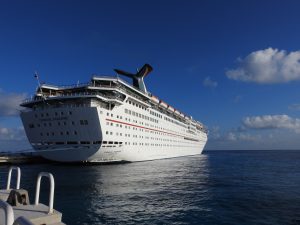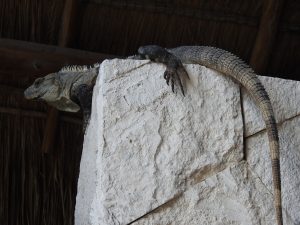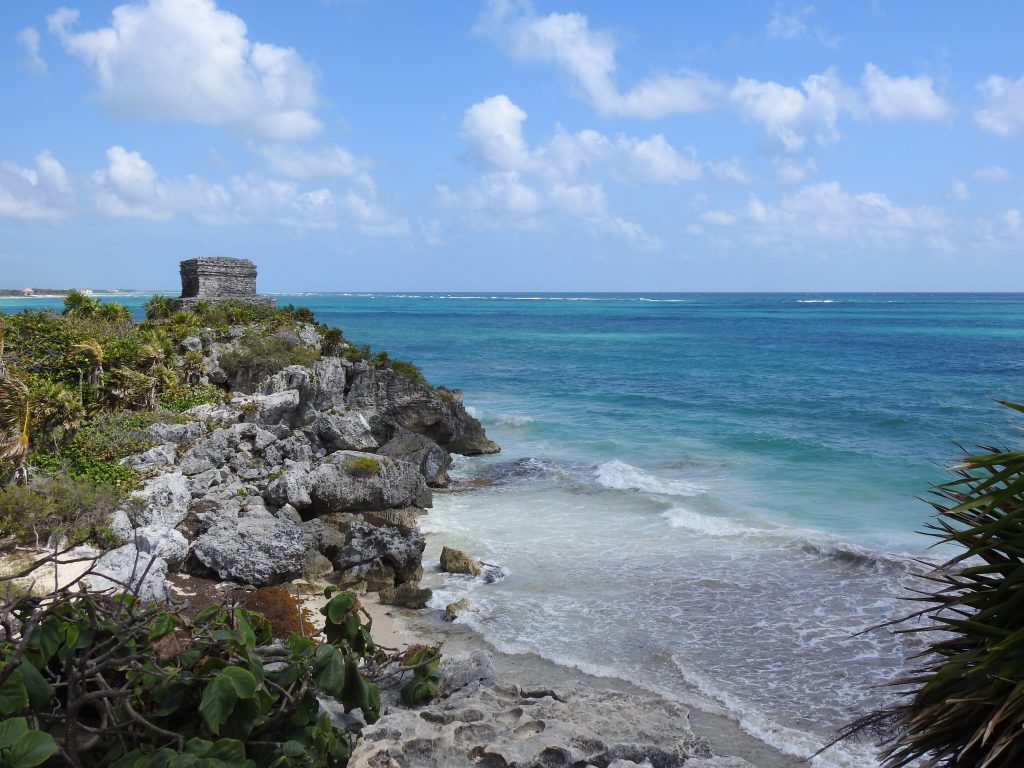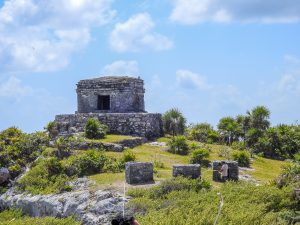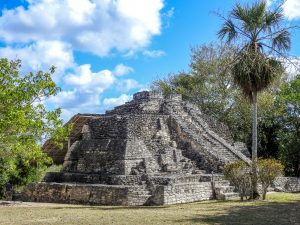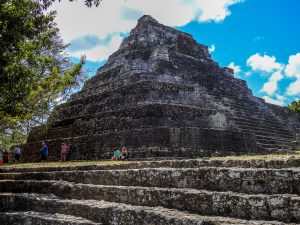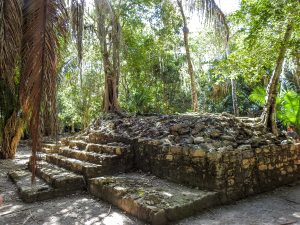I had a fun week. So much fun, in fact, that I’m going to make two separate posts covering different aspects. This post, is about my recent Caribbean cruise to the Yucatan Peninsula, Mexico. This was originally planned to be a carbon-copy of last year’s trip, but no sooner was I on board the Carnival Paradise, than I learned the ports of call had been
changed; gone was the stop at George Town, Grand Cayman, and added was a visit to Costa Maya, just down the coast. That was OK with me, as I’ve been to George Town several times and wasn’t interested in more than lunch ashore. Tulum, on the mainland from Cozumel was where I wanted to go. Truth be told, I was interested in purchasing a replacement obsidian cartouche for my granddaughter. The original never made it home from Florida last year.
So, I said if I ever had another chance…
Learning that Costa Maya offered a second opportunity to photograph Mayan ruins, I was all in. After all, photographing Mayan ruins while on a cruise was my impetus for purchasing a Nikon Coolpix P900 camera with its super-zoom lens. I lugged my camera gear around in the drizzle last year, and didn’t want a repeat experience. I am delighted to report that the Coolpix did an admirable job. It’s got a smaller sensor (16 mpx) than my D7100, and doesn’t shoot in NEF (RAW), but the super-zoom (24mm – 2000mm equivalent) gets you there in a hurry, and the results are excellent for day-to-day
photography. For example, this fellow was watching the tourists lining up to enter.
Tulum is the only evidence of the Mayan civilization on a coast site. The others are all inland, covered by centuries of jungle. Thus, Tulum not only offers great insight into the Mayan society, but also provides unfettered chances for photographing out in the open. The down side? Sunburn!
Perhaps the most iconic image of Tulum that makes the travel pages is the Temple of the Wind God, which sits perched some 39 feet above the seashore.
The super-zoom makes photographing this temple a dream of creativity.
The day was so nice that I was able to walk to the other side of the clearing and see the temple from another angle. The Castle Pyramid is the most impressive edifice, but the is also the Temple of Frescos, the Temple of the Descending God (yes, the tilt of the roof is intentional) and more. Despite the richness of the site, experts say it’s a small outpost. Map of Tulum.
Now, how to figure out placing photos on this page without requiring a lot of extraneous text….
Temple of the Wind God
Temple of the Descending God and the Castle Pyramid.
Oh, I haven’t forgotten Chacchoben (“chak-CHO-ben”). This site was “rediscovered” in 1972, but it wasn’t until 1994 that the Mexican government set to restoring it. Work continued until it was opened to the public in 2002. It’s currently a small site, with only three pyramids restored. As money and time permit, more will be revealed.
The primary pyramid is the Temple Pyramid.
There is ample evidence of other structures under the jungle overgrowth, as some of these photos show.
Up next: Fine dining at sea and on land.

